Visiting Cambodia During the Cambodian New Year: What to Expect
Hey there! This post may contain affiliate links, which means I’ll receive a commission if you purchase through my link, at no extra cost to you. Please see my legal page for more details.
My dad and I were so lucky to be in Cambodia during the Cambodian New Year, which is called the Khmer New Year or Chaul Chnam Thmey.
During the festivities, families are out in the streets for three days wishing each other good luck for the Cambodian New Year, which usually falls on April 13th or 14th based on a lunar calendar.
This is the only time of year when boys and girls are encouraged to play together, so organized games are coordinated in the streets and villages. It is fascinating to watch the mass flirtation as the search for a spouse is on.
This time also signifies the end of the harvest season and a brief period of rest before the rains come.
A great deal of work goes into the preparations for the New Year. Sparkling stars and streamers are sold at the market in the days leading up to the three-day holiday. And a lot of sugar cane stalks are mashed to create that sweet, traditional sugar cane juice.
Let’s dive into what to expect when visiting Cambodia on the Cambodian New Year.
Day One of the Cambodian New Year: Moha Songkran
The first day of the Khmer New Year is called Moha Songkran. On this day, one of seven angels is assigned to protect the country for the year. Since the New Year began on a Sunday when I was there (in 2019), the world would be protected by the angel Tungsa Tevy all year long.
She was expected to arrive in Cambodia at 3:12 pm on Sunday, so all houses were cleaned by this time in anticipation of the new guest. Tables heaped with offerings were placed outside of homes with fig fruit featured in the center, since this angel’s favorite food is fig.
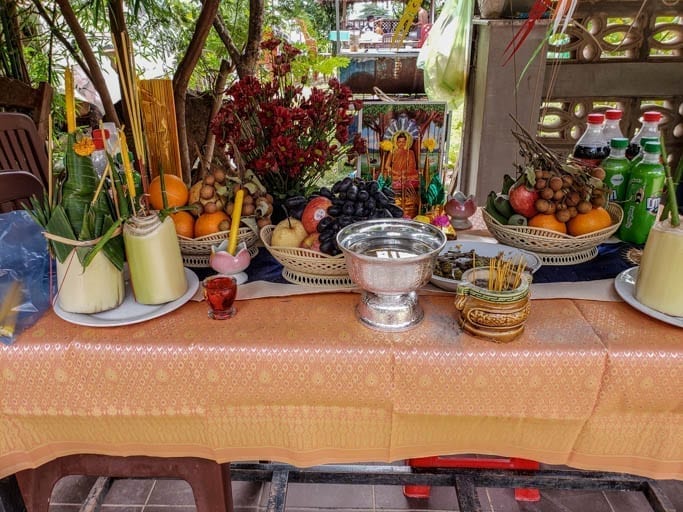
Outside of our rented apartment in Siem Reap, a table appeared in the communal space heaped with offerings at 3:00 pm. And then the party began. Our hosts invited us to join and we danced, dodged talcum powder and water fights, clapped at the enthusiastic karaoke performances, and ate huge bowls of traditional stew.
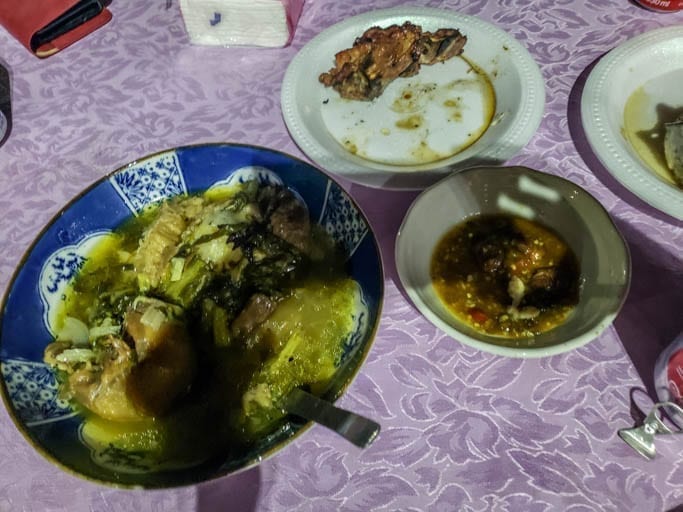
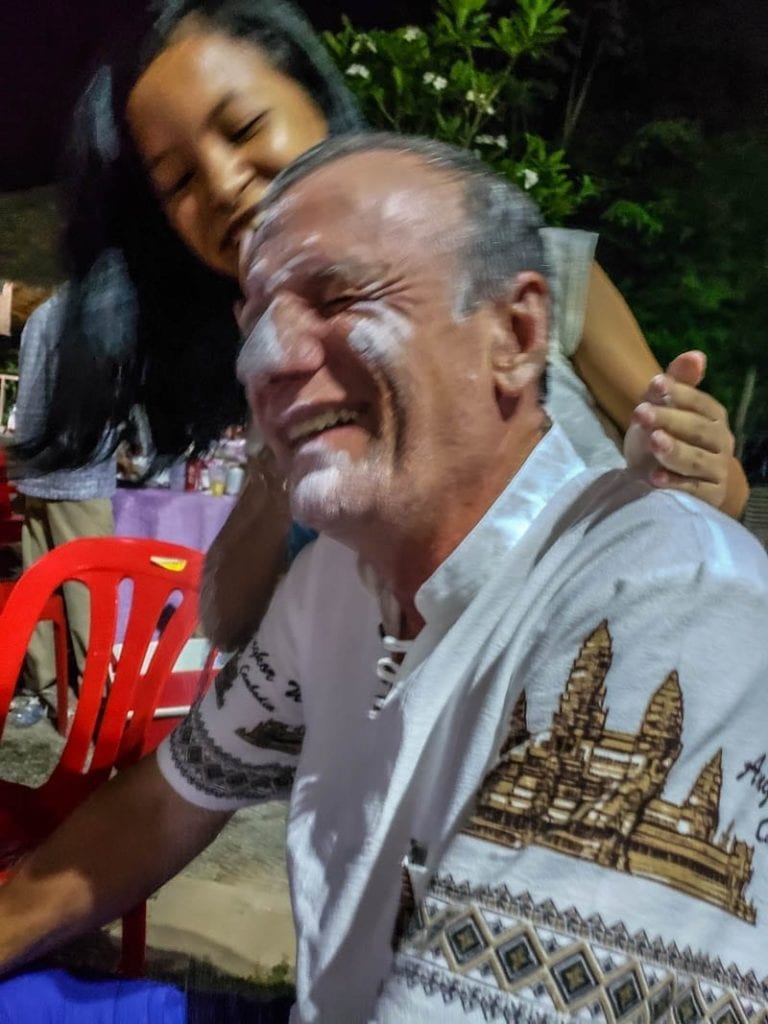
We were even presented with traditional Cambodian New Year attire to wear – and I think we pretty much rocked it.
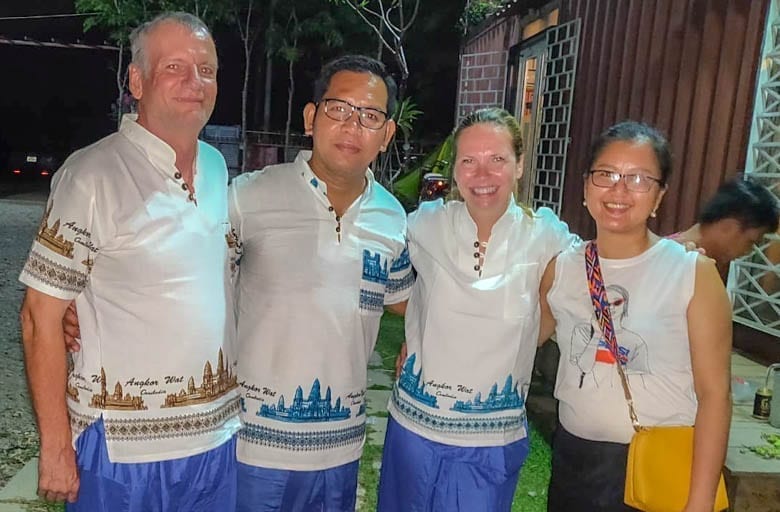
Day Two of Cambodian New Year: Virak Wanabat
The second day of the Khmer New Year is called Virak Wanabat or “Day of Giving”. On this day, Cambodians bring gifts to their parents, grandparents, and elders. They visit the temples to receive blessings from monks and provide gifts to the less fortunate.
Almost everything is closed on this day, but hotels host events for wanderers like us. So, for us, this day meant traditional Cambodian food served up street-food style in the backyard of a ritzy hotel.
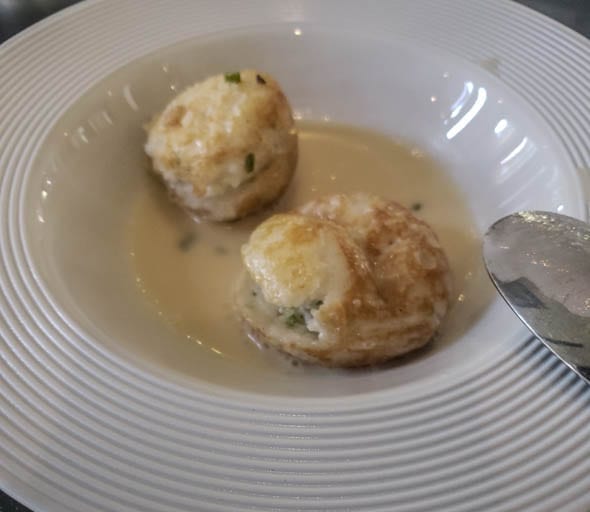
The crispy rice balls bursting with palm sugar were my favorite for eating, but it was much more fun to watch the preparation of banh chav (crepes) as the light egg pancakes were stuffed full of minced pork and topped with vegetables straight from the market.
Down on the always lively Pub Street, things had a much more raucous feel. It was clear that the water-fight situation had escalated from this…
…to over-loaded trucks roamed the streets with people piled in the back – all armed with water guns. Everywhere you looked there was a “militia” ready to strike!
It is light-hearted fun but, as we were unarmed, we quickly retreated to the safety of our flat where our hosts were still singing karaoke and sipping Angkor Beer in the yard.
Day Three of Festivities: Leung Sakk
The third day of the Khmer New Year is called Leung Sakk or “New Beginnings. Cambodians go to the temples in the morning to perform cleansing ceremonies. Statues are washed and the feet of monks and elders are cleansed.
And then bring on the water guns again!
My dad and I enjoyed a quiet day of new beginnings (we planned our upcoming trip to Vietnam!) with the sound of fireworks and karaoke in the background.
Where to Stay in Siem Reap:
About the Author
Hi! I’m Jen!
I’m a freelance writer and travel blogger who quit my nine-to-five after my fiancé, Jeff, died of cancer at the age of 40. When he died, I realized that life is just too short to delay our dreams. Since my dream was to travel and write, I now travel and write full-time. Today I wear hiking boots instead of heels and collect experiences instead of things.
You might like
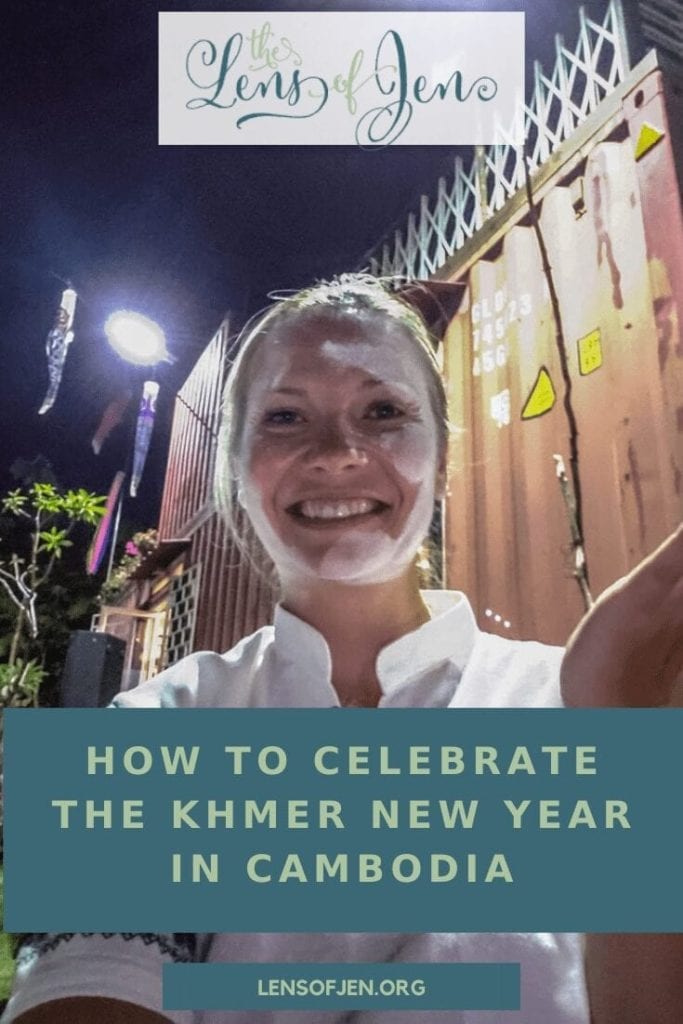

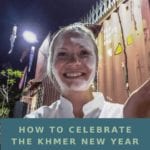
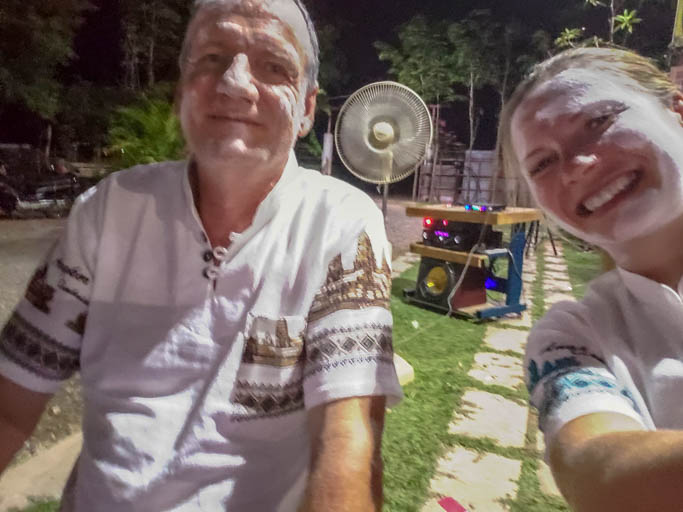
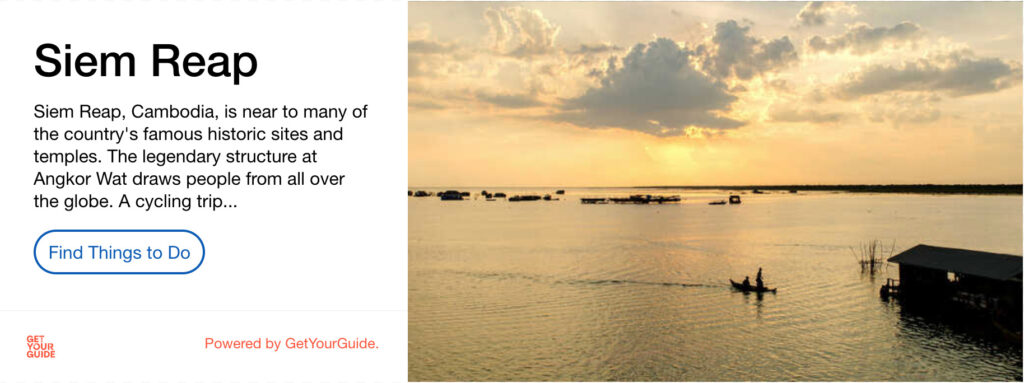
One Comment